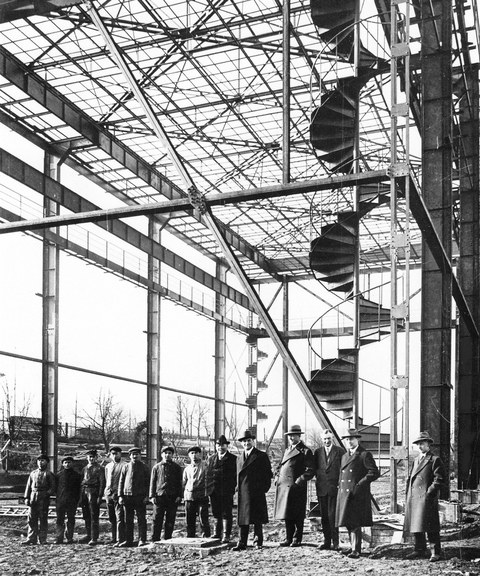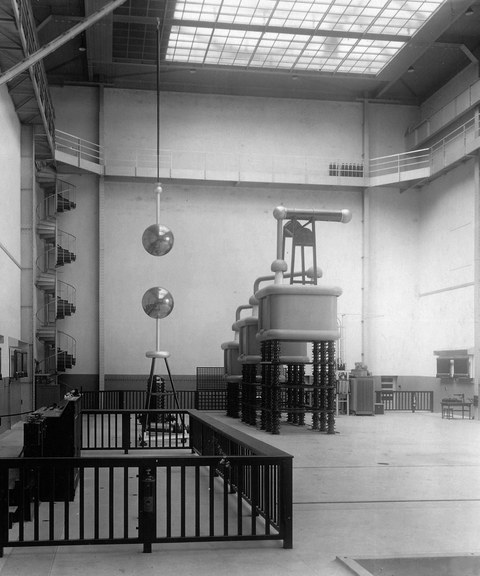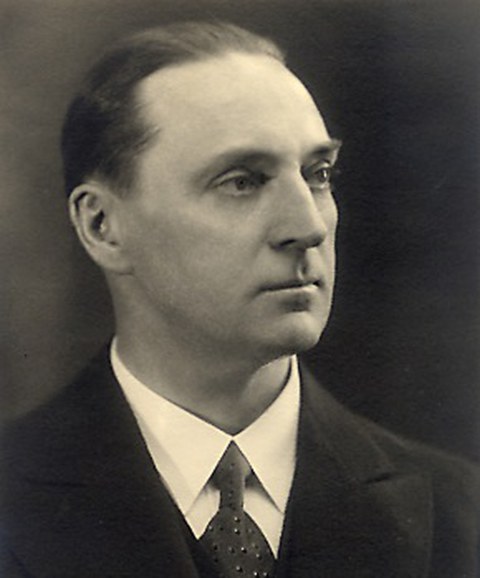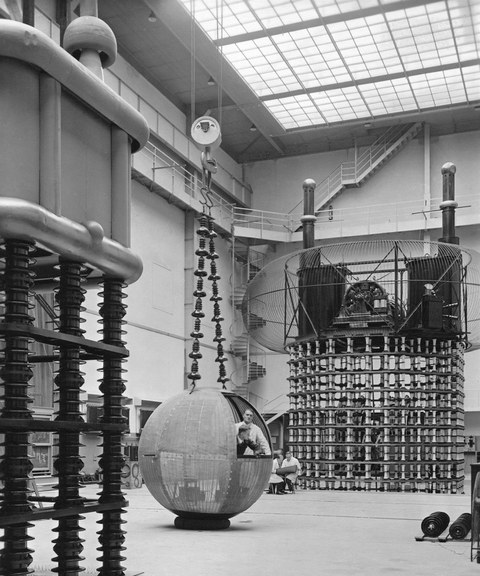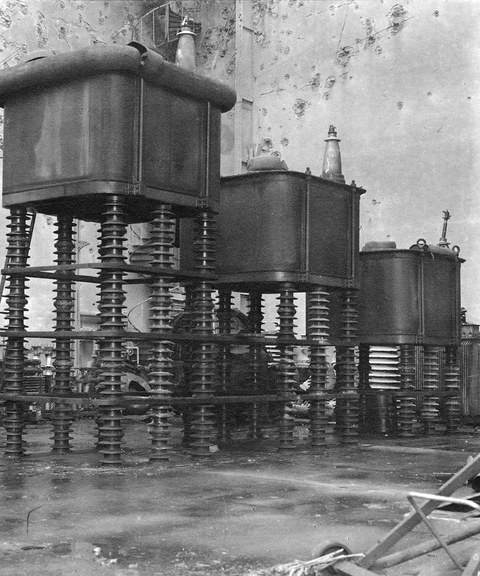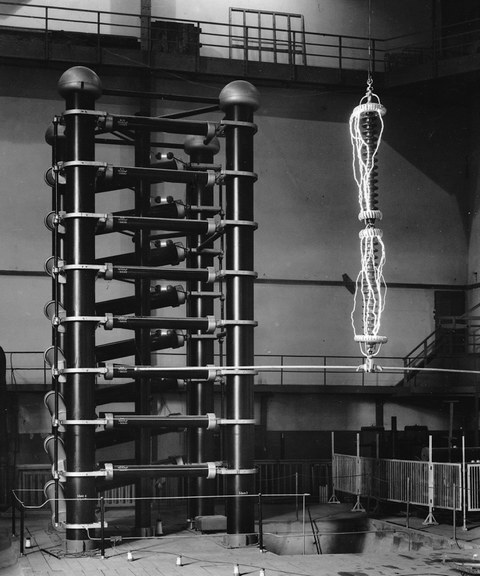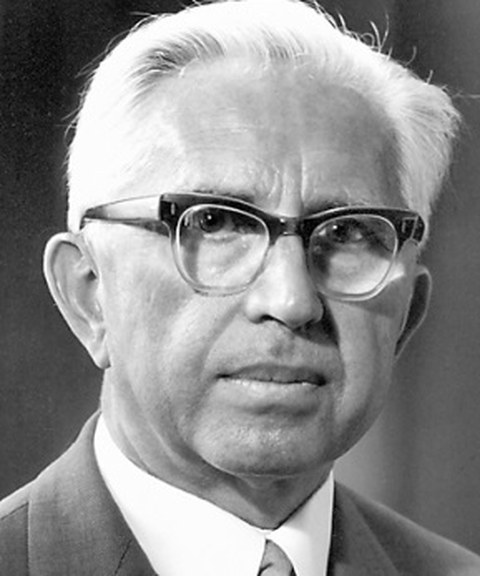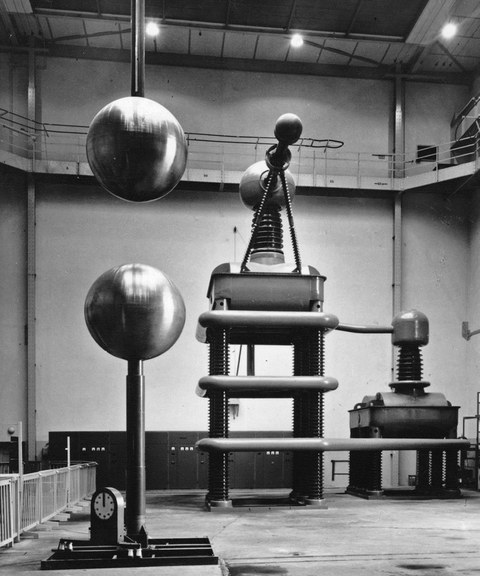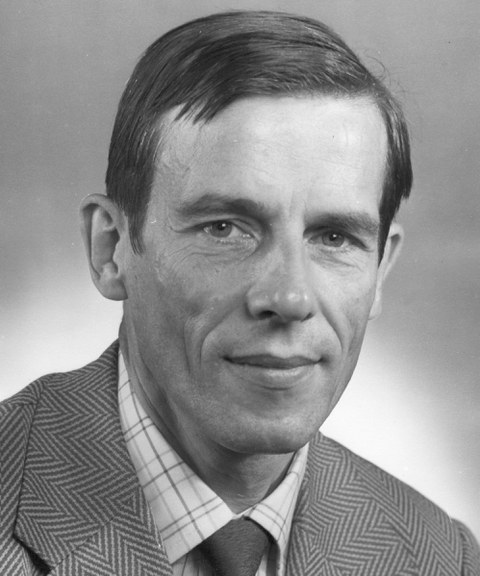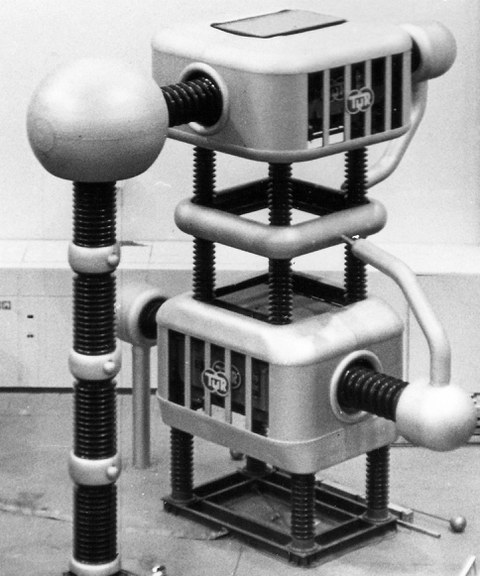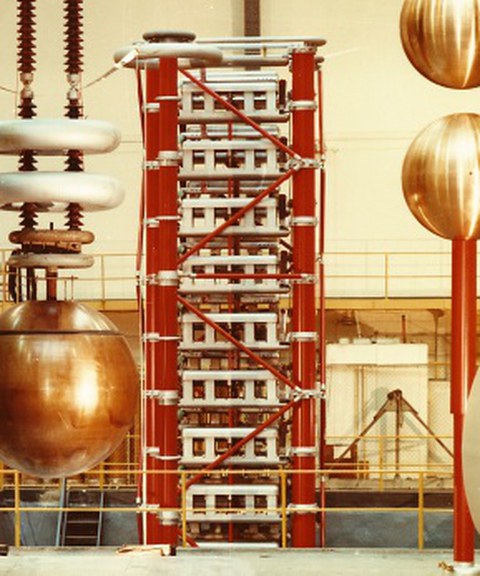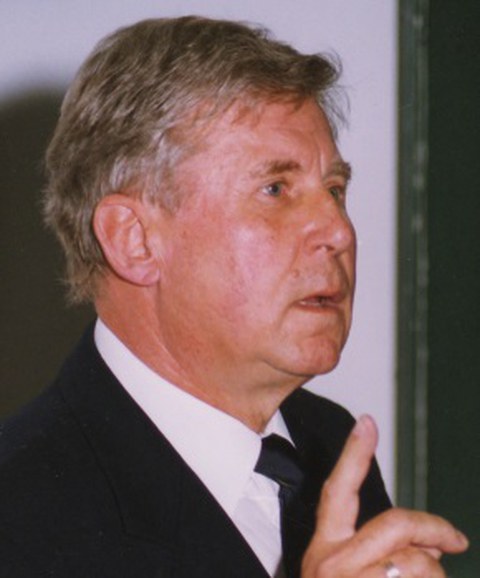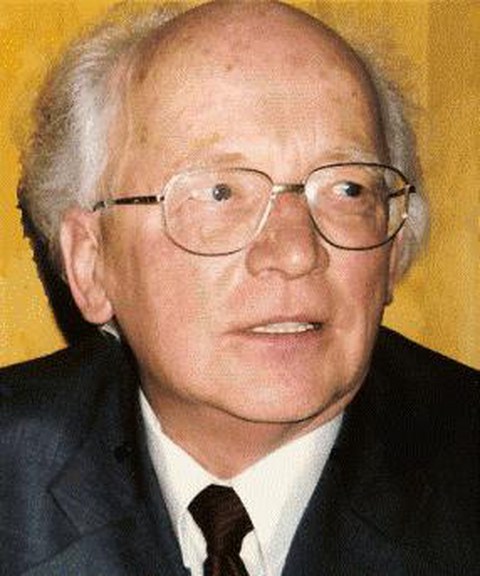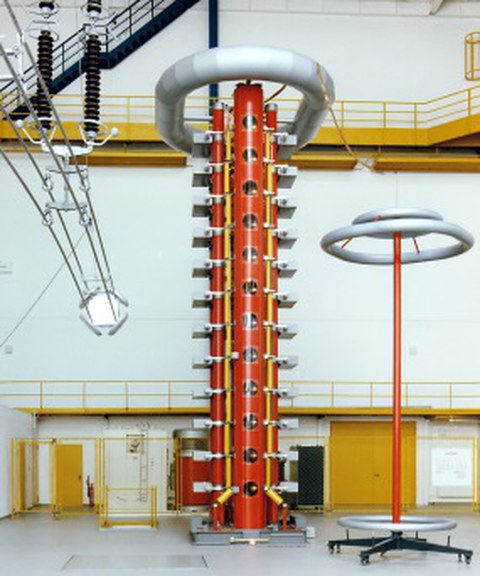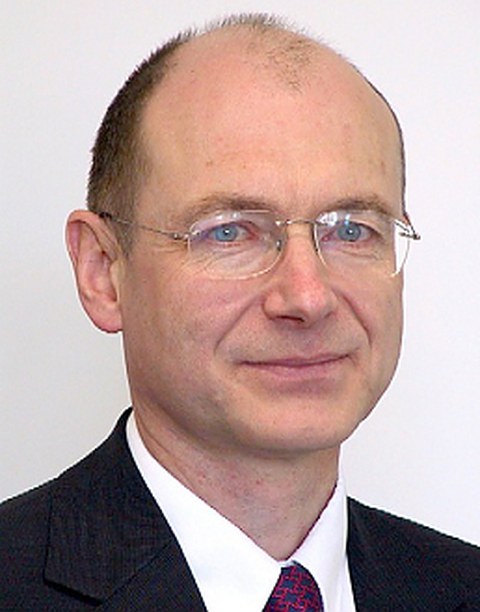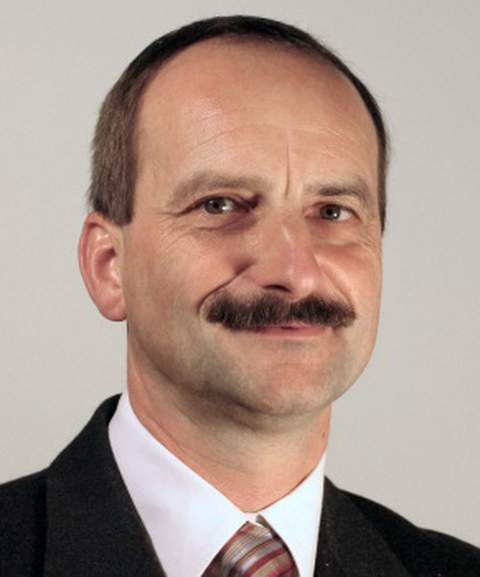Information about the history of the institute
1928-1930
Construction of the High Voltage Hall according to plans of Prof. Binder
With a length of 45 m, a width of 21 m, and a height of 18 m, it is Europe's largest high voltage hall. It has been erected as steel frame construction.
1930
Commissioning of the high voltage loboratory with a 3-stage 1000 kV power-frequency testing station
The association of Saxon utility companies endowed the Technical Academy Dresden with the testing facility on the occasion of the academy's 100-year existence.
1931
Foundation of the Institute of High Power Current and High Voltage Engineering under direction of
Prof. Ludwig Binder (1881-1958)
Prof. Binder was appointed to the Chair of Electrical Machine Construction in 1919. Since 1928, he has been director of the correspondent institute.
1936
Commissioning of a second 2-stage 1000 kV power-frequency testing station, installed insulated from the base
Both testing stations could be connected in series. That way, power-frequency voltages of up to 2000 kV could be generated.
1945
Destruction of high voltage hall and testing stations during an air attack
The facilites were dissembled and brought into the Soviet Union as part of reparation. In 1946, reconditionining of the high voltage hall and resumption of teaching programme started under direction of Prof. Binder.
1951
Commissioning of an 8-stage 2000 kV impulse testing station
Now, it was possible to reproduce electrical surges in high voltage power transmission systems in the Dresden laboratory. These already had been investigated by Prof. Binder.
1952
Foundation of the Institute of High Voltage Engineering under direction of Prof. Fritz Obenaus (1904-1980)
Prof. Obenaus, a follower of Prof. Binder, was initially appointed to the Chair of High Voltage Engineering already established in 1951. He was director of the institute until 1968.
1953
Commissioning of a new 2-stage 1500 kV / 1500 kVA power-frequency testing station
At that time, peak test voltages still were gauged with measuring sphere gaps.
1968
Appointment of Prof. Dr.-Ing. habil. Wolfgang Mosch (born 1928) as successor of Prof. Obenaus to the Chair of High Voltage Engineering and to the director of the correspondent institute
As all institutes, the Institute for High Voltage Engineering was disintegrated in the context of the 3. university reform in 1968. Initially as Lehrgruppe (group) High Voltage Engeneering, from 1976 as Wissenschaftsbereich (section) High Voltage Engineering, the group under direction of Prof. Mosch was subjected to the new division Electrical Engineering.
1972
Commissioning of a new short-circuit-proof 2-stage 1200 kV / 1200 kVA power-frequency testing station
To date, this system still ranks among the most powerful power-frequency testing stations in European high voltage laboratories.
1976
Commissioning of a new 10-stage 2400 kV / 100 kJ impulse testing station
The system served for generation of lightning stroke voltages of up to 2200 kV and of switching impulse voltages of up to 1600 kV. It was equipped with novel PCB capacitors and electronically controlled constant current charging.
1978
Appointment of Prof. Dr.-Ing. habil. Helmut Böhme (1937-2011) to the teaching and research area High Voltage Equipment
Prof. Böhme established the teaching and research group High Current Engineering / High Voltage Equipment as part of the Wissenschaftsbereich (scientific section) High Voltage Engineering. He directed the group until 1991.
1987
Appointment of Prof. Dr.-Ing. habil. Eberhard Lemke (born 1937) to the teaching and research area High Voltage Test and Measurement Engineering
Prof. Lemke directed the group High Voltage Test and Measurement Engineering until 1992, a research focus were broadband partial discharge measurements.
1989
Start of reconstruction of the high voltage laboratory
Starting summer 1989, the building has been renovated within 4 years under ongoing activity of the institute. All electrical, heating, and darkening facilities have been reconditioned. New hoisting gear and a comprehensive high voltage module system have been installed, and all offices and workshops have been updated.
1990
Foundation of new departments and institutes at Technische Universität Dresden
The Wissenschaftsbereich (scientific section) High Voltage Engineering became the Institute of High Voltage and High Current Engineering. Until 1991, it was directed by Prof. Böhme.
1991
Appointment of Prof. Dr.-Ing. habil. Martin Eberhardt to the Chair of Electrical Insulation Engineering
Prof. Eberhardt also directed the Institute of High Voltage and High Current Engineering from 1991 until 1995.
1993
Commissioning of a new 10-stage 2400 kV / 120 kJ impulse testing station
The system is equipped with recent digital control and measurement technology. One can generate lightning stroke voltages of up to 2300 kV, switching impulse voltages of up to 1700 kV, and impulse currents of up to 75 kA. The testing station had to be acquired as replacement for the PCB contamined station from 1976.
1995
Appointment of Prof. Dr.-Ing. Josef Kindersberger (born 1953) to the Chair of High Voltage and High Current Engineering
Prof. Kindersberger also directed the Institute of High Voltage and High Current Engineering until 2001. With his leaving in 2001, the institute was combined with the Institute of Electrical Power Systems under direction of Prof. Schegner to the new Institute of Electrical Power Systems and High Voltage Engineering.
2003
Appointment of Prof. Dr.-Ing. Steffen Großmann (born 1954) to the Chair of High Voltage and High Current Engineering
Prof. Großmann directs the Institute of Electrical Power Systems and High Voltage Engineering alternately with Prof. Schegner. From 2012 to 2015, Prof. Großmann was dean of the Faculty of Electrical and Computer Engineering.
